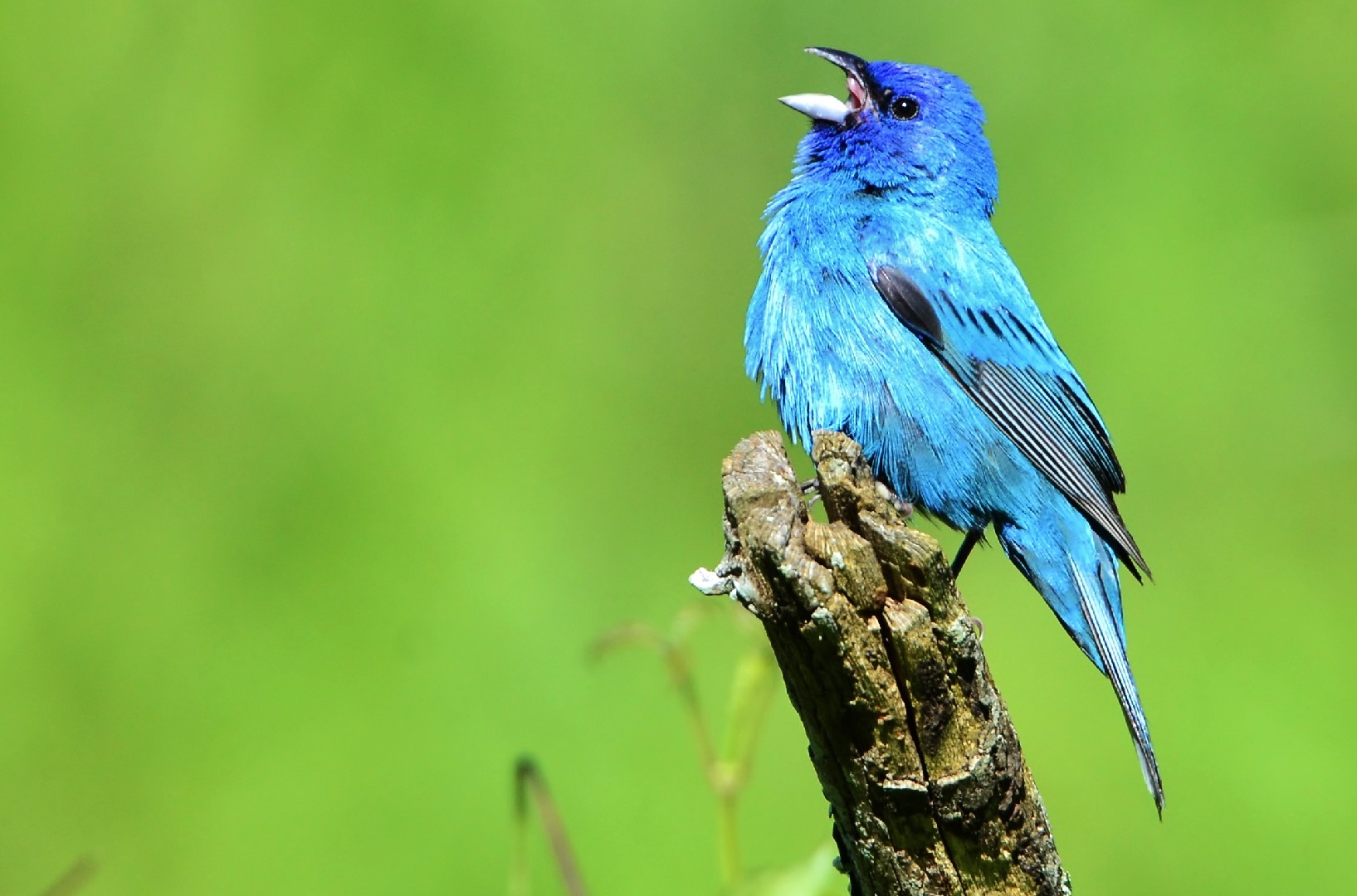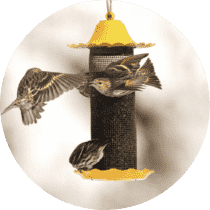Indigo Bunting
A species of North american buntings Scientific name : Passerina cyanea Genus : North american buntings
Indigo Bunting, A species of North american buntings
Botanical name: Passerina cyanea
Genus: North american buntings
Content
Description People often ask General Info
 Photo By Gareth Rasberry , used under CC-BY-SA-3.0 /Cropped and compressed from original
Photo By Gareth Rasberry , used under CC-BY-SA-3.0 /Cropped and compressed from original Description
One of the most brilliantly colored birds of North America, this sparrow-sized bird likes disturbed habitats such as weedy fields and rural areas. The indigo Bunting is actually more cyan-blue than indigo, but at one point during the mating season, the male's face turns indigo before it goes purple. It is considered one of the most cheerful songbirds of North America.
Size
12 - 15 cm
Life Expectancy
10 years
Nest Placement
Shrub
Clutch Size
3 - 4 eggs
Incubation Period
1 - 2 broods
Number of Broods
11 - 14 days
Nestling Period
9 - 11 days
Feeding Habits
Indigo Bunting's diet primarily consists of insects such as caterpillars, spiders, grasshoppers, and beetles, especially during the breeding season, to provide protein to their young. In the winter, seeds and berries, like those from grasses and shrubs, dominate their diet. They sometimes visit bird feeders for millet.
Habitat
Indigo Bunting occupies brushy forest edges, open deciduous woods, and areas with second growth, favoring temperate climates. These birds thrive in mixed wooded and open settings, including farmlands with vegetation such as thickets and hedges. They demonstrate adaptability, dwelling in various elevations and expanding into suburban gardens and agricultural margins.
Nest Behavior
The female indigo Bunting spends 5–7 days building the nest. Egg-laying and parental care specifics remain unprovided, warranting further research for completion.
Nest Characteristics
Indigo Bunting's nest is cup-shaped, about 3.5 inches in diameter, constructed by the female using grasses, bark, leaves, and spiderweb or caterpillar silk. It is usually positioned within 3 feet of the ground in shrubs at the edge.
Dite type
Insectivorous
People often ask
General Info
Feeding Habits
Bird food type
Bird Feeder Type

Small Tube Feeder

Platform
Sounds
Call
Recording location: United States
Song
Recording location: United States
Song
Recording location: United States
Behavior
Indigo Bunting spend a large portion of their day near the ground within the understory, engaging in activities such as hopping, perching, and executing brief, swift flights between vegetation. They demonstrate conspicuous territorial behavior with males arriving first on breeding grounds and perching at territory edges to signal availability. Courtship involves males closely serenading arriving females until a monogamous pair bond is established, although instances of extra-pair copulation occur. Indigo Bunting showcase aggression through quick, combative flights and various threat displays like crown feather raising and tail flicking towards interlopers. Pre-migration behavior includes flock formation and a molt phase, with a temporary sojourn in designated areas for completing the molting process before traveling further south for wintering.
Distribution Area
The breeding range stretches from southern Canada to Maine, south to northern Florida and eastern Texas, and westward to southern Nevada. The winter range begins in southern Florida and central Mexico and stretches south through the West Indies and Central America to northern South America. It has occurred as a vagrant in Antigua and Barbuda, Barbados, Denmark, Ecuador, Germany, Iceland, Ireland, Netherlands, the Netherlands Antilles, Saint Pierre and Miquelon, Serbia and the United Kingdom. 
Scientific Classification
Phylum
Chordates Class
Birds Order
Perching birds Family
Cardinals Genus
North american buntings Species
Indigo Bunting